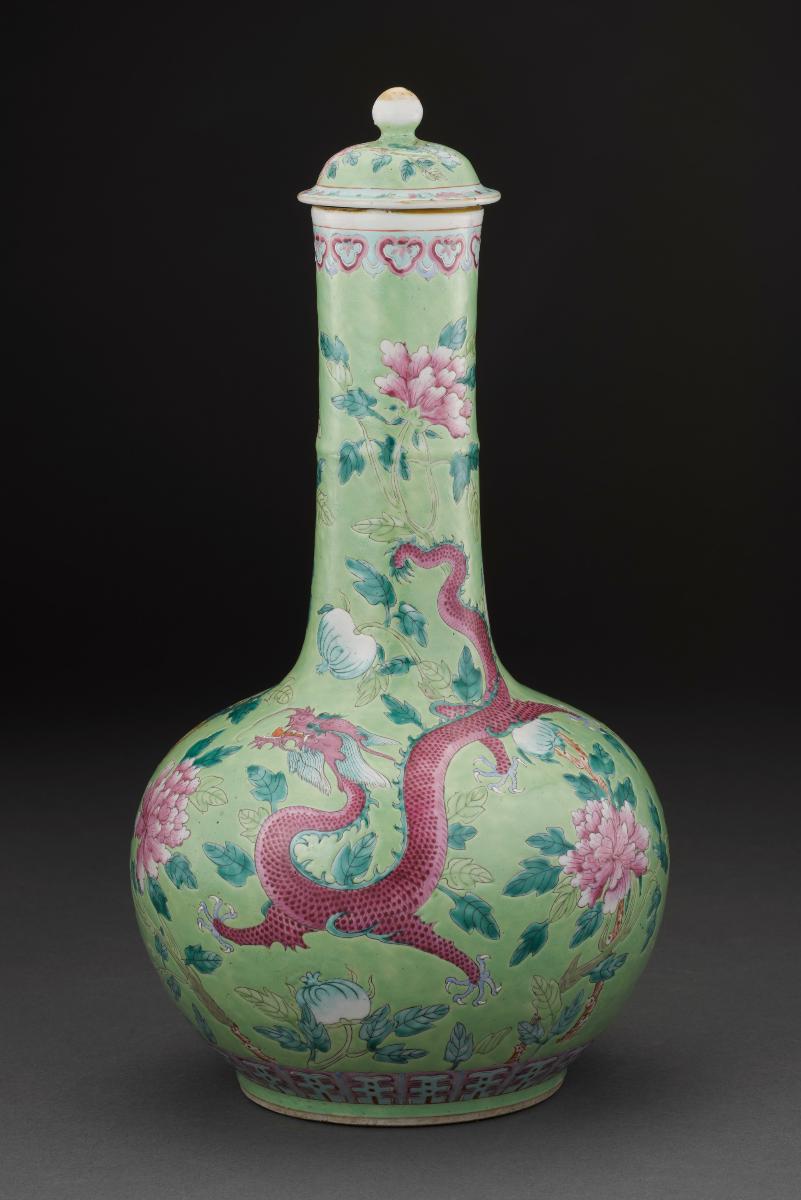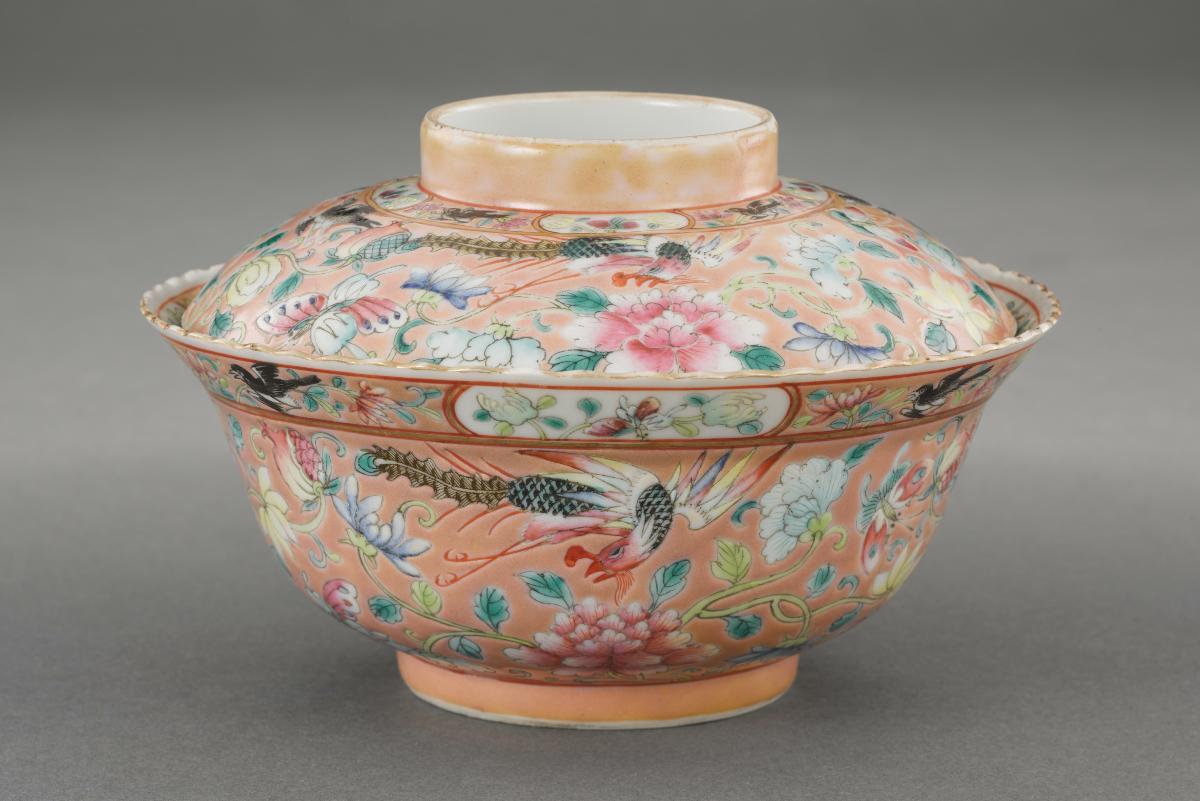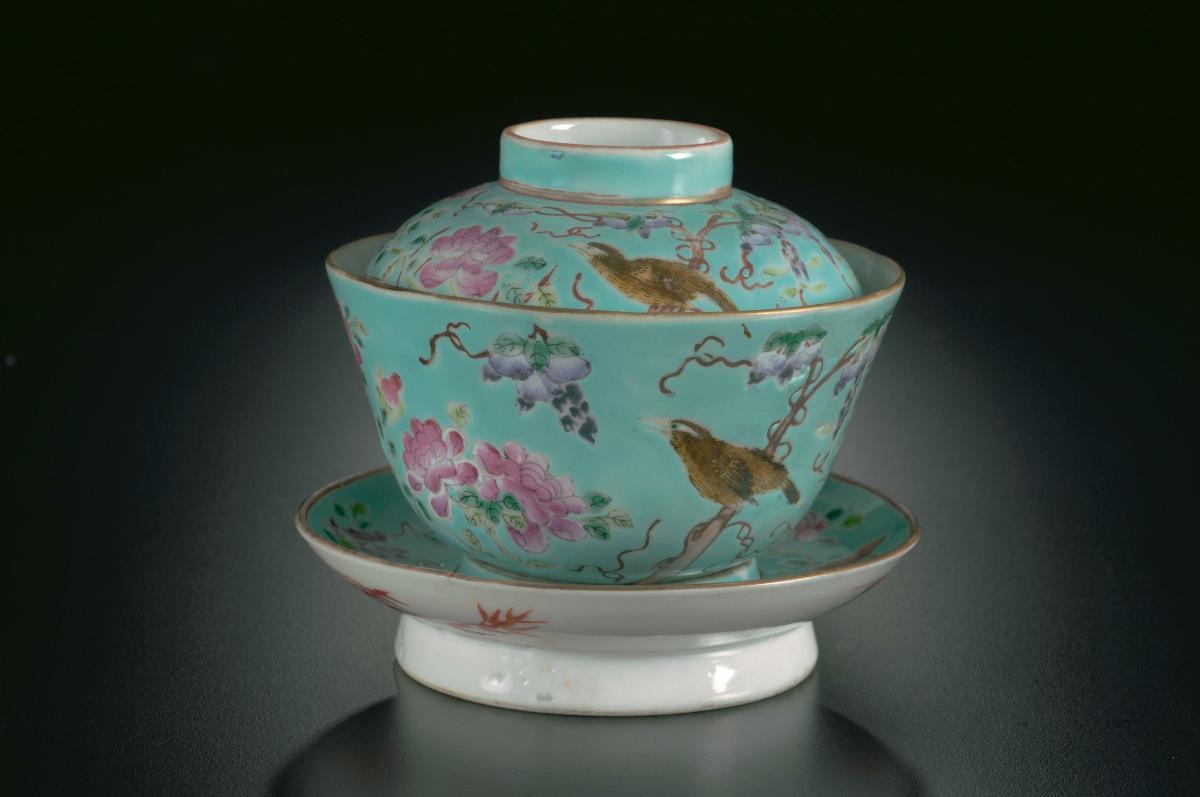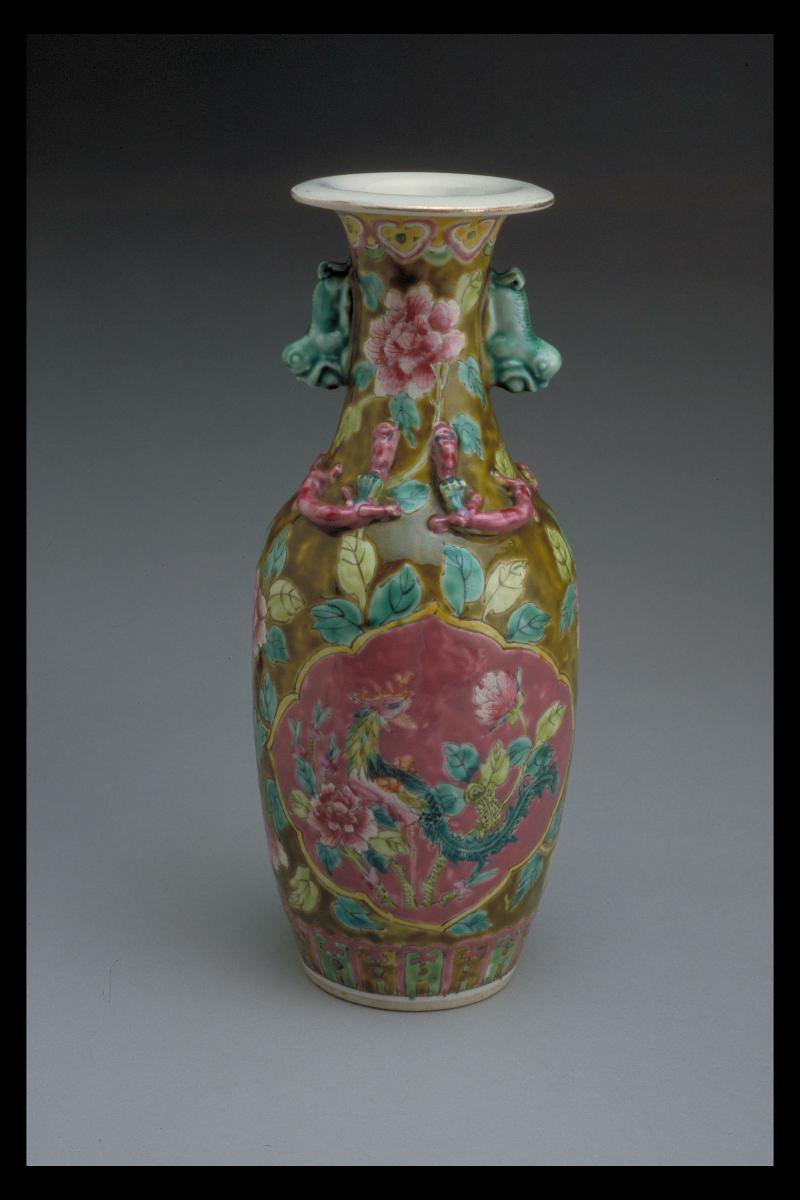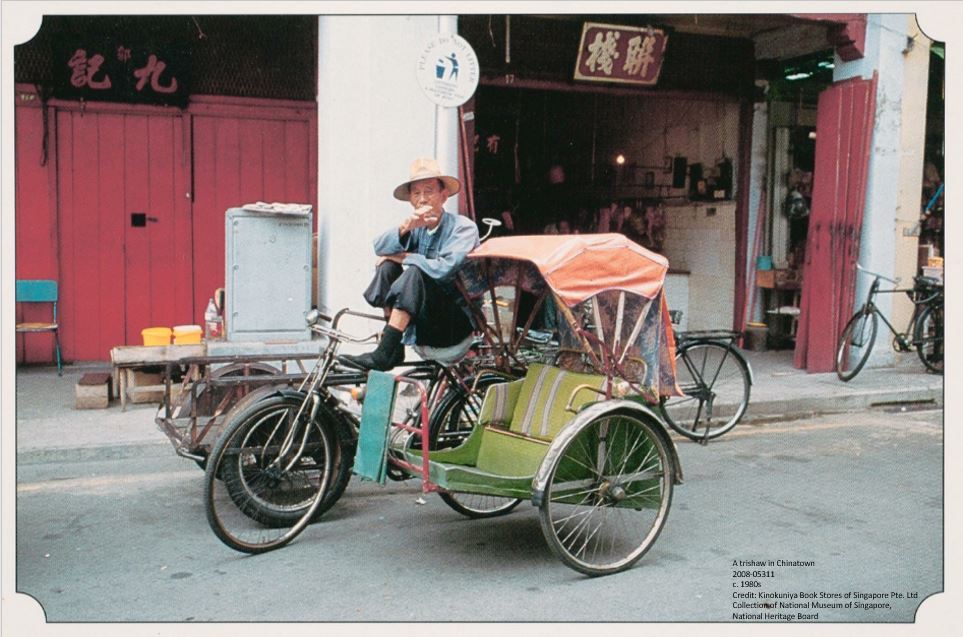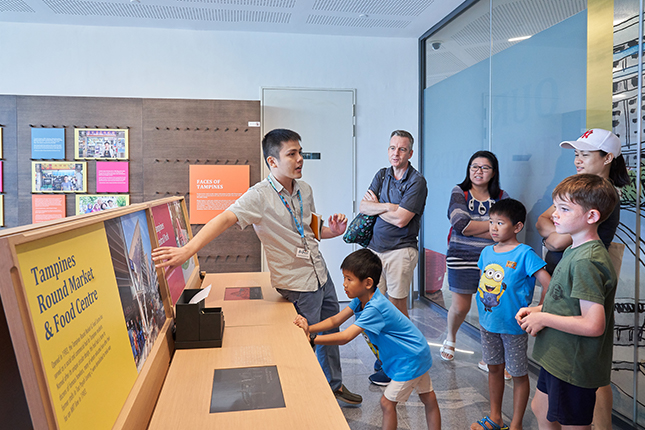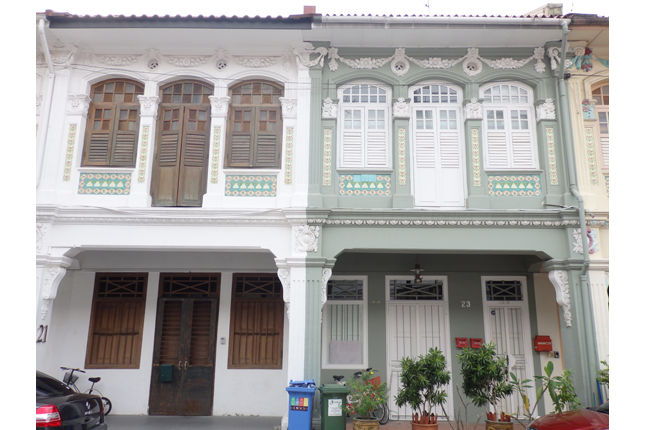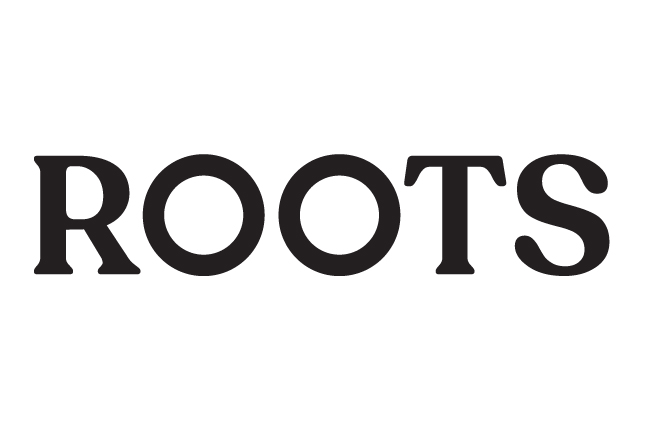This lime-green tall-necked vase has a bulbous form with a finely painted design of dragon and pheonix motifs, traditionally emblems of the emperor and empress. Motifs such as these were rarely found on Peranakan porcelain, indicating it was probably a specially commissioned piece.This form known as 'you chui ping' (oil mallet vase), was introduced during the Kangxi period (1662-1722). It is generally believed Nonyaware was made in Jingdezhen in Jiangxi province, the centre for porcelain production in China since the Yuan dynasty (1279-1368), when imperial kilns were established to produce wares for the court. This is a rare example of Nonyaware. It has been suggested vases were not usually used in Peranakan homes as ornamentation or holding flower arrangements other than as offerings at the altar.




